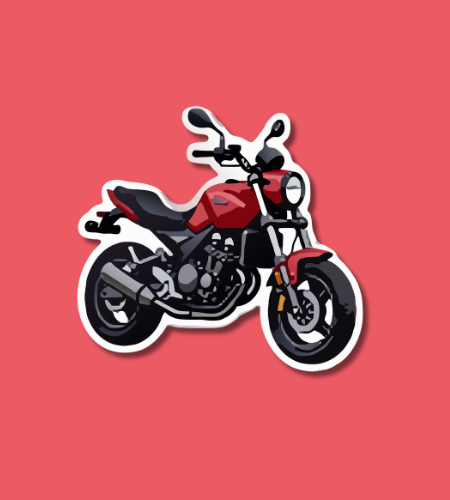Every year on June 21, enthusiasts around the globe celebrate World Motorcycle Day, a tribute to the spirit of motorcycling and the sense of freedom it embodies. Coinciding with the summer solstice—the longest day of the year—this day offers riders ample daylight to hit the open road and share their passion for two-wheeled adventures.
History of World Motorcycle Day
The origins of World Motorcycle Day are intertwined with the evolution of the motorcycle itself. In 1860, French inventor Pierre Michaux developed a steam-powered two-wheeler, laying the groundwork for future innovations. By 1885, German engineers Gottlieb Daimler and Wilhelm Maybach introduced the first internal combustion motorcycle, the Daimler Reitwagen, revolutionizing personal transportation.
The commercial production of motorcycles began in 1894, and by the early 20th century, brands like Royal Enfield emerged, contributing to the motorcycle’s growing popularity. Motorcycles played significant roles in various sectors, including military communications during wars and as a means of efficient transportation.
Recognizing the motorcycle’s impact on society and culture, World Motorcycle Day was established to honor this legacy. The choice of June 21 aligns with the summer solstice, symbolizing the freedom and exhilaration associated with motorcycling. Over the years, this day has become an occasion for riders to come together, celebrate their shared passion, and promote the positive aspects of motorcycling.
Interesting facts about the invention and evolution of motorcycles
- The first recognized motorcycle was created in 1885 by German inventors Gottlieb Daimler and Wilhelm Maybach. It was called the Daimler Reitwagen and ran on a wooden frame with a single-cylinder gasoline engine.
- Although it had two large wheels, the Reitwagen also used small stabilizer wheels, making it more of a motorized bicycle prototype than a true modern motorcycle.
- The term “motorcycle” was first used in 1894 when the German company Hildebrand & Wolfmüller produced the first series production motorcycle for commercial sale.
- In the early 1900s, iconic American motorcycle manufacturers like Harley-Davidson (founded in 1903) and Indian (founded in 1901) began mass-producing bikes in the United States.
- Motorcycles quickly became popular as a more affordable and accessible alternative to cars, especially in rural areas or for personal transport during World Wars I and II.
- During World War II, motorcycles were widely used by military forces for courier duties, reconnaissance, and quick transportation across rough terrain.
- The post-war era saw a boom in motorcycle culture, with manufacturers like Triumph, BSA, and Moto Guzzi helping to popularize biking as both transportation and a lifestyle.
- Japan entered the motorcycle scene powerfully in the 1950s–60s with companies like Honda, Yamaha, and Kawasaki, revolutionizing the market with affordable, reliable, and high-performance bikes.
- Modern motorcycles come in a wide range of types including cruisers, sport bikes, touring bikes, and dirt bikes, each developed to meet different rider needs and environments.
Today, electric motorcycles are emerging, blending the century-old concept with cutting-edge technology for a cleaner, quieter ride.
Why is World Motorcycle Day important?
World Motorcycle Day serves as a celebration of the motorcycle’s enduring presence in our lives. For many, motorcycles represent more than just a mode of transportation; they embody a lifestyle characterized by freedom, adventure, and a connection to the road. This day acknowledges the joy and camaraderie that motorcycling brings to countless individuals worldwide.
Moreover, the day highlights the motorcycle’s role in promoting sustainable and efficient transportation. With their fuel efficiency and lower environmental impact compared to larger vehicles, motorcycles offer a viable alternative for commuting and travel. World Motorcycle Day encourages discussions about safe riding practices, environmental consciousness, and the integration of motorcycles into modern transportation systems.
- Celebrates the freedom and adventure associated with motorcycling
- Honors the historical significance and evolution of motorcycles
- Promotes sustainable and efficient transportation alternatives
- Encourages safe riding practices and road safety awareness
- Fosters a global community of motorcycle enthusiasts
How to Celebrate World Motorcycle Day
Participating in World Motorcycle Day can be as simple as taking your motorcycle out for a ride, enjoying the open road, and embracing the sense of liberation it offers. Whether you’re riding solo or with a group, the experience can be both exhilarating and reflective. For those new to motorcycling, this day presents an opportunity to learn more about the community, perhaps by attending local events or visiting motorcycle dealerships.
Organizing or joining group rides can enhance the sense of community and shared passion among riders. Additionally, engaging in activities such as motorcycle maintenance workshops, safety seminars, or charity rides can add depth to the celebration. Sharing your experiences on social media using hashtags like #WorldMotorcycleDay can also help raise awareness and connect with fellow enthusiasts globally.
- Take a solo or group motorcycle ride to celebrate the day
- Attend local motorcycle events or rallies
- Participate in safety workshops or maintenance seminars
- Organize or join charity rides supporting various causes
- Share your motorcycling experiences on social media platforms
World Motorcycle Day Dates Table
| Year | Date | Day |
|---|---|---|
| 2025 | June 21 | Saturday |
| 2026 | June 21 | Sunday |
| 2027 | June 21 | Monday |
| 2028 | June 21 | Wednesday |
| 2029 | June 21 | Thursday |
Subscribe to our newsletter and never miss a holiday again!

